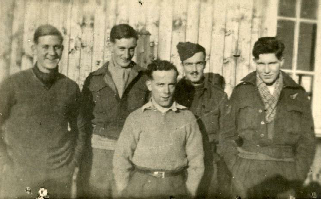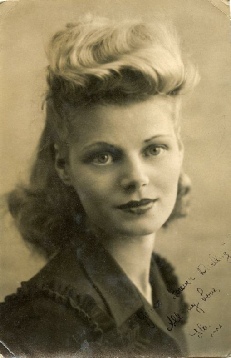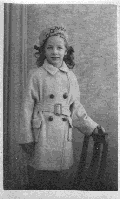Incarceration Years
Stalag Luft III was famous for escapes by British and allied PoWs and was immortalised in the movies ‘The Wooden Horse’ made in 1950, based on a book by escapee Eric Williams about a real escape in 1943 and
the American ‘The Great Escape’ which was filmed in 1963 about a large number of prisoners escaping in 1944.
The camp was also famed for housing at the time Bill and Sid were there, Douglas Bader, the famous fighter pilot, serial
escapee and double leg amputee. Whether true or apocryphal, the irrepressible pilot indulged in what he called “goon baiting”. On one occasion he is rumoured to have walked into the camp
pond, removed his artificial legs and threw them to the bank, thereby forcing the 'goons' to wade in and carry
him out.
Sid (centre), Bill (2nd from right) and three others
unknown. This photo was taken by the PoW
photographer to send home to confirm the
prisoners were alive and well.
The inseparable pals stayed in the camp until the
13th of October 1942 when they opted to transfer to
Stalag Luft I in Barth near the Baltic coast.
Bill found the confines of a prison and the separation from his family intolerable so it was time for Sid’s mental strength to come to the fore. Today it would probably be diagnosed as PTSD as Bill was close to breaking down. On a number of occasions Sid had to stop Bill, sometimes physically, from running at the camp fence to try and escape. It would have meant a bullet for sure and death probably.
A photo sent by Chris to Bill,
probably towards the end of the
war. On the back is written in a
young child’s hand:-
Dear Daddy
This is the coat Mummy made
me and the hat and gloves. I
hope you like it. It is warm.
Love Christine
xxxxxxxxxxxxxxxxxx
A photo from Flo sent to Bill in Stalag Luft III
She wrote on it “Yours forever Darling,
All my love, Flo xxx”
On the 3rd of November 1943, after a year in Barth they were moved, by train, to Stalag Luft VI in Heyderkrug
(now Šilutė) in German occupied Lithuania.
Life in all of the PoW camps was marred by hunger and consequently food was an ongoing matter of concern. The recommended dietary intake for a normal healthy inactive adult male was 2,150 calories but the Germans issued each prisoner rations of 1,928 calories per day, with the balance made up from American, Canadian, and British Red Cross parcels and items sent by families. The camps also had an official internal bartering system called a Foodacco. Cigarettes were used as unofficial currency and with an entrepreneurial spirit Bill asked his family to send chocolate rather than the usual cigarettes. Once received, he raffled off the chocolate
for a “fag a go” and then bought back the chocolate in the Foodacco for half of his raffle entry fees. By the end of the war he had many thousands of cigarettes and used them in exchange for a watch from a liberating American soldier and food items.


 PAGE 6
PAGE 6